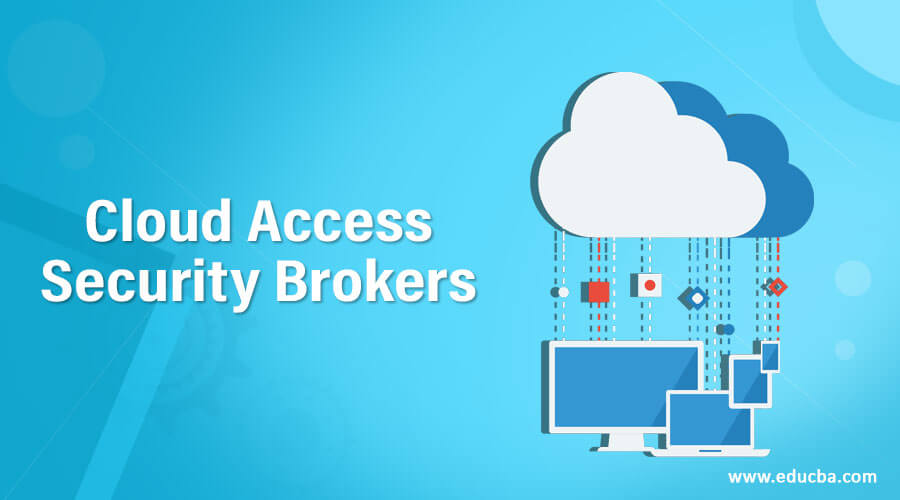
Introduction to Cloud Access Security Broker
A Cloud AccessSecurity Broker (CASB)has become an on-site or web-based compliance control point that can integrate and communicate with enterprise security policies as cloud-based services are being accessed between web service users and cloud service providers. Organizations are constantly handling cloud service threats to CASB providers, security protocols are being followed, and the rules complied with even though networks outside of their borders are not regulated directly. If you plan to use CASB to create trust in the usage of your cloud services organization, consider following a solely policy-making and data protection approach. In this topic, we are going to learn about Cloud Access Security Brokers.
Evolution of Cloud Access Security Brokers
The same wall garden model has been running for more than ten years before the cloud computing, and BYOD policy grew. But when services continued to come through and go to the cloud — with or without prior knowledge or permission from workers using these cloud services — companies began to search for a way to apply clear safety policy through various clouds and safeguard customers and company data. A number of IT executives, who soon learned that their organization was using the cloud much deeper and more comprehensive than they expected, obtained the insights of their CASB. McAfee Cloud Adoption and Risk Report 2019 revealed that while the average IT professionals assumed that the company used about 30 cloud services, they actually used an average of 1,935 services.
How Does It Work?
The Cloud Access Security Broker’s role is to provide data and risks in the cloud with visibility and control to satisfy corporate security requirements. This is accomplished by a three-stage process:
1. Discovery: The AutoDiscovery solution uses CASB to compile and who is using a list of all third-cloud services.
2. Remediation: Upon awareness of the related risk for each application, the CASB may use this information in order to create a policy for information of the organization and user access to satisfy its security requirements.
3. Classification: Once the full extent of cloud use is revealed, the CASB defines the risk level for each program by defining what form of data is stored in the program and how it is transmitted.
Pillars of Cloud Access Security Brokers
Here are the following pillars mention below
1. Data security
Cloud adoption eliminated many of the barriers that hinder successful distance cooperation. Nevertheless, the smooth flow of data may also be of benefit to organizations involved in the security of sensitive and confidential information at an immense expense. While DLP solutions on-site are designed to protect the information, they often do not apply to cloud services and do not have a cloud background. The combination of CASB with sophisticated DLP allows IT to see how confidential information flows from or to the web, the web, and the server. Enterprise data leakage may be minimized to a minimum by implementing security features such as prevention of data loss, collective control and access control, protection of information rights, encryption, and tokenization.
2. Visibility
Large organizations have access to multiple programs in different cloud environments for any number of employees. Unless cloud use is beyond the IT context, corporate data is no longer constrained by corporate management, risk or regulatory policies. A CASB approach offers full accountability for the use of cloud applications, including user information, such as device and location information, to protect users, sensitive data, and intellectual property. The research for cloud discovery includes a risk assessment for each cloud service used so that security professionals can determine if access will continue or whether the device should be blocked. Such knowledge also helps to create more granular controls, including the provision of various levels of access to apps and data depending on the user, location, and task feature of a person.
3. Threat Protection
Regardless of whether the workers and third parties with compromised credentials leak or steal confidential data from cloud providers through incompetence or malicious intention. CASBs will compile a full view of the normal usage patterns and use them as a basis for comparison in order to help spot anomalous user behavior. In addition, CASBs can recognize and address risks as soon as someone attempts to steal information from them or to obtain improper access through machine-based learning consumer and entity behavioral analysis (UEBA).
4. Compliance
Although companies can outsource any system and data storage in the cloud, they are responsible for the privacy and protection of enterprise data enforcement regulations. Cloud Protection Access Brokers can help ensure cloud enforcement by addressing a wide range of security regulations such as HIPAA, ISO 27001 and PCI DSS, and more.
Conclusion
In this article, we have seen Cloud Access Security Broker and its working, Which helps to monitor all activities on the network and enforce security policies. I hope you will find this article helpful.
Recommended Articles
This is a guide to Cloud Access Security Brokers. Here we discuss the Pillars and Evolution of Cloud Access Security Brokers. You may also have a look at the following articles to learn more –

